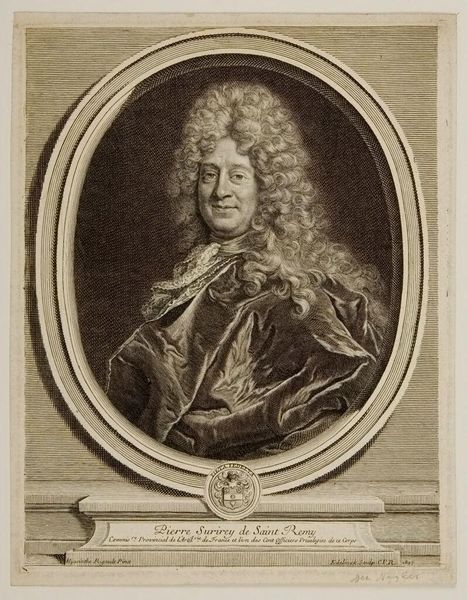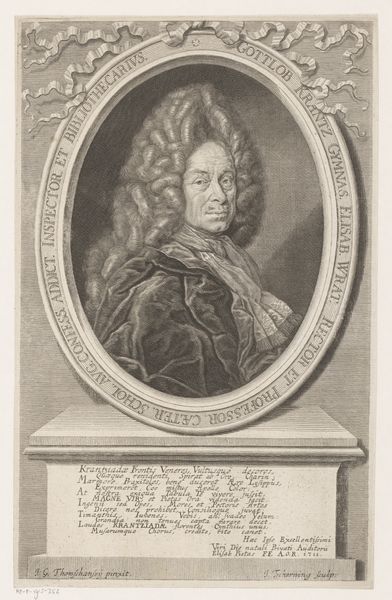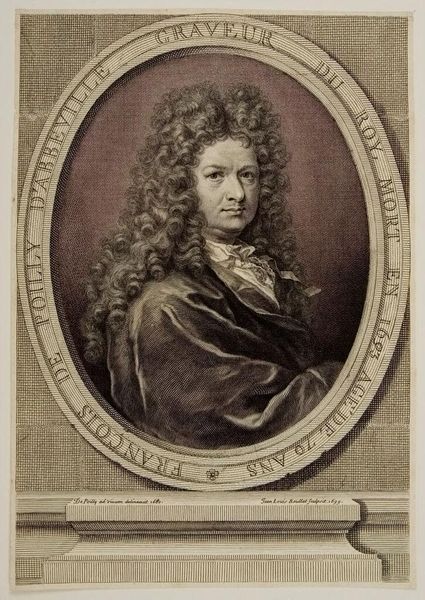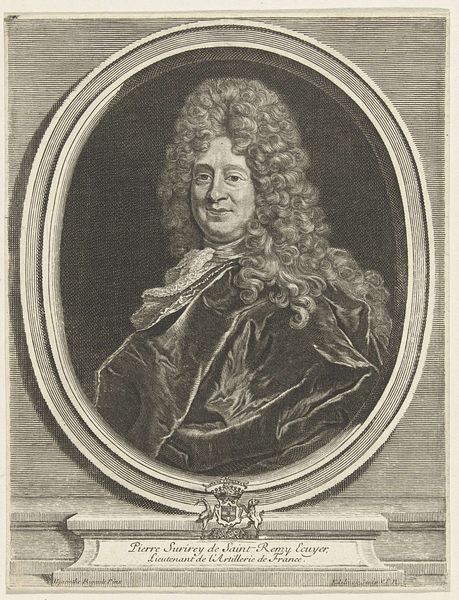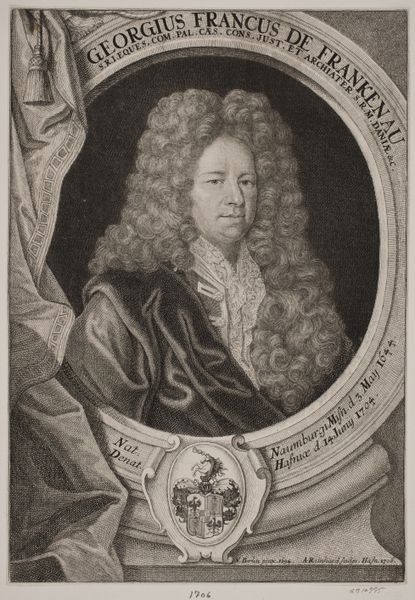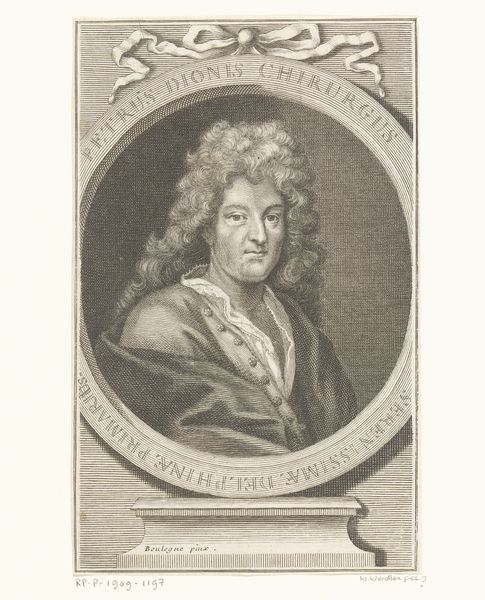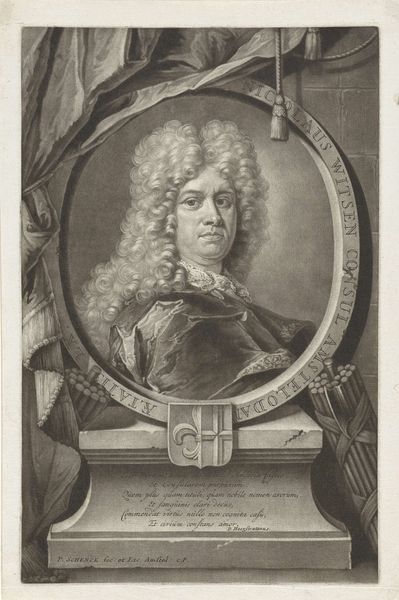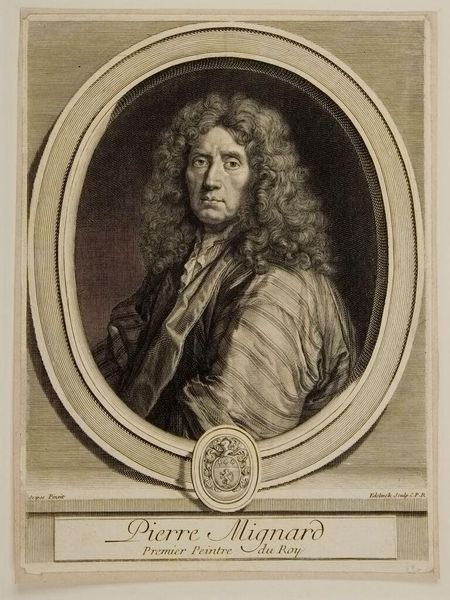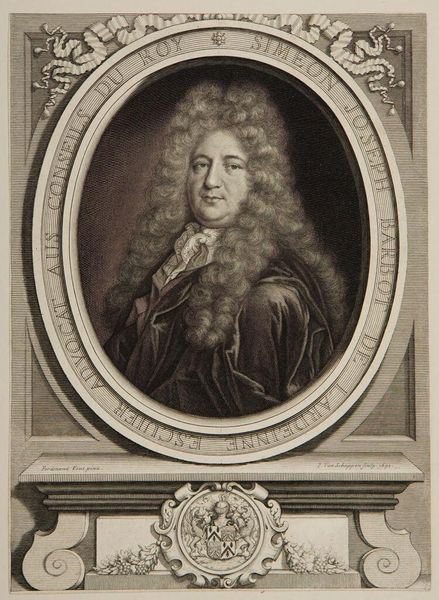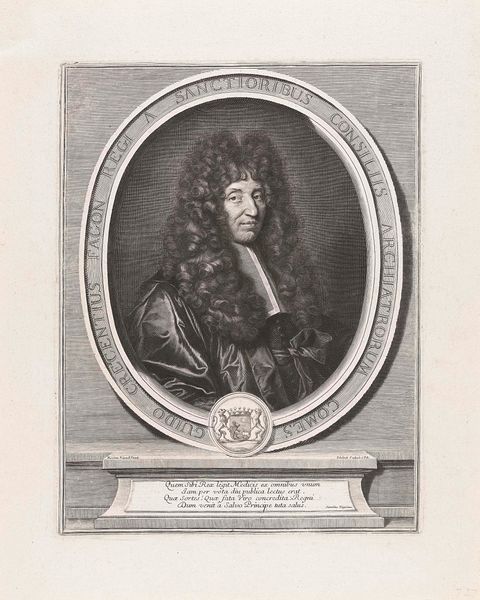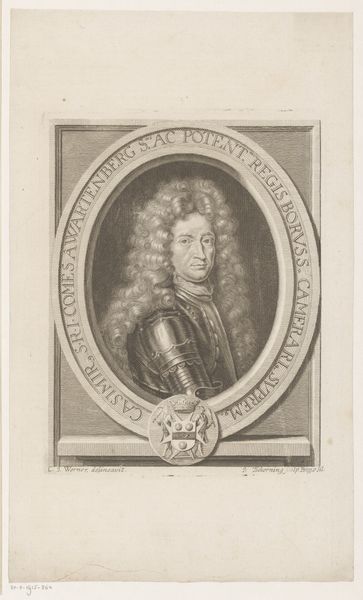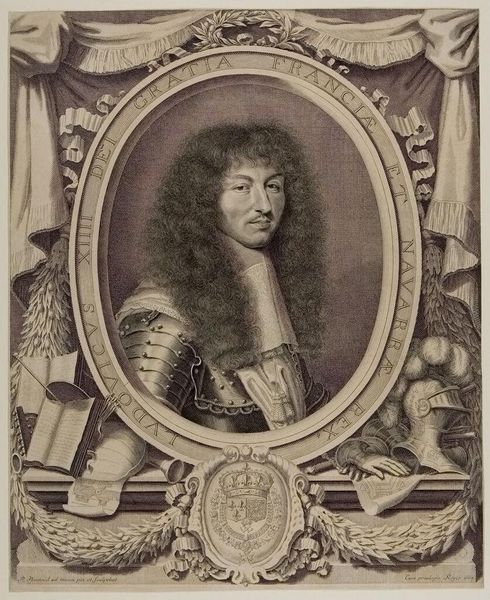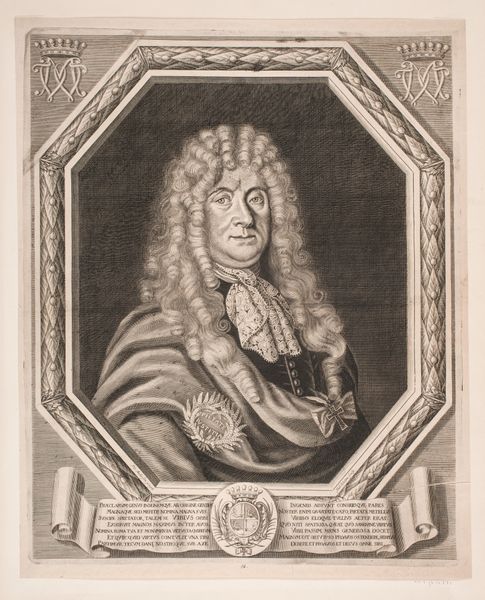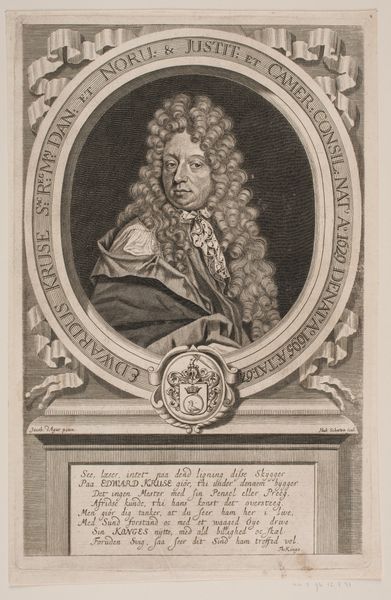
Samuel Pepys c. 17th century
Copyright: CC0 1.0
Editor: This is a portrait of Samuel Pepys by Robert White. It's undated, but White lived from 1645 to 1703. It's an engraving, so it feels quite formal. I'm curious about the context in which it was made. What can you tell me about the public role of portraits like this during that period? Curator: Portraits in 17th-century England were powerful markers of status and influence. Engravings like this made portraits more accessible, circulating images of important figures like Pepys, Secretary of the Admiralty, beyond elite circles. What do you notice about the inscription framing Pepys? Editor: It says "SAM. PEPYS. CAR. ET. IAC. ANGL. REGIB. A. SECRETIS ADMIRALIÆ." So, a secretary for Kings Charles and James. Curator: Exactly. These details deliberately constructed Pepys's public image, linking him to the monarchy and naval power. How do you think this image functioned within the political landscape of the time? Editor: It seems like a way to reinforce his authority and project an image of stability and competence, which makes perfect sense. Thanks! Curator: Precisely. Examining these portraits helps us understand how power was visualized and disseminated in the 17th century.
Comments
No comments
Be the first to comment and join the conversation on the ultimate creative platform.
